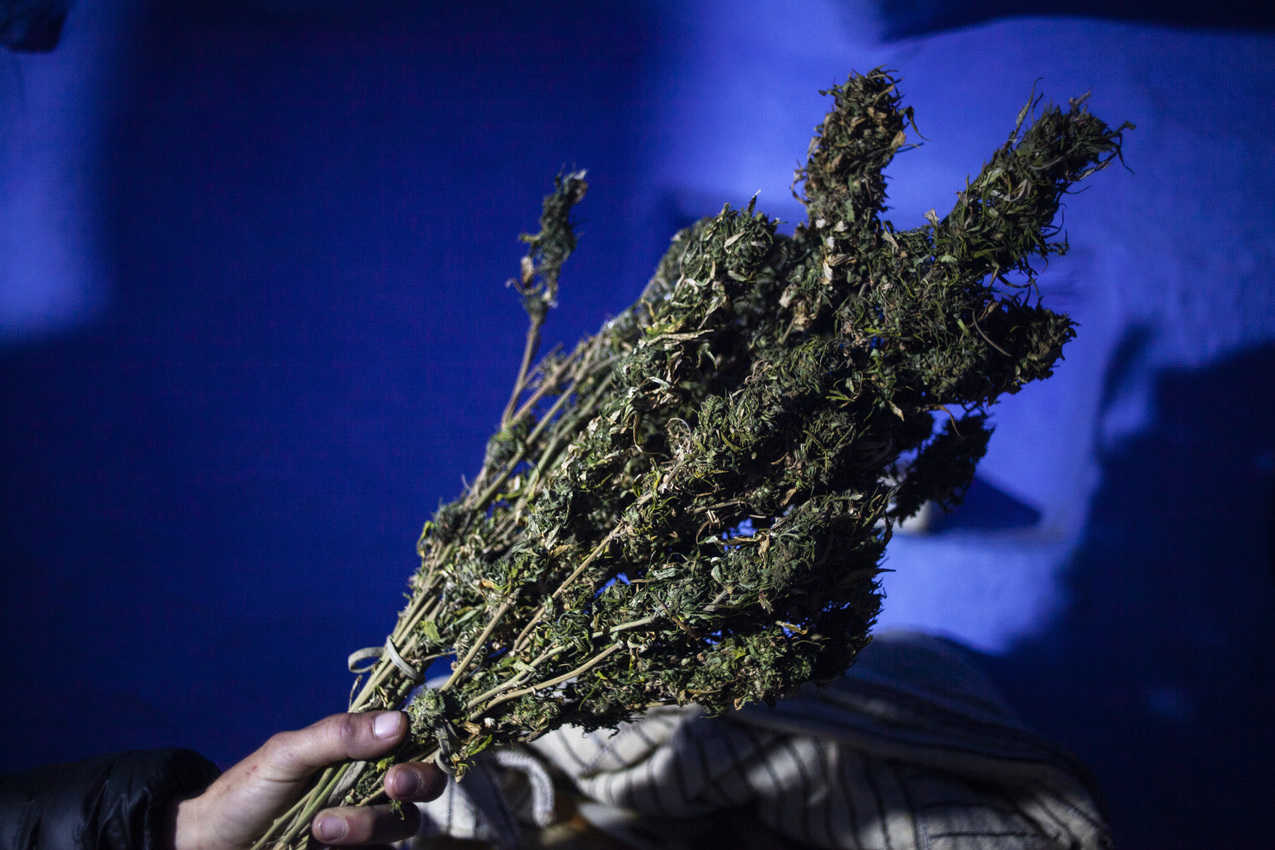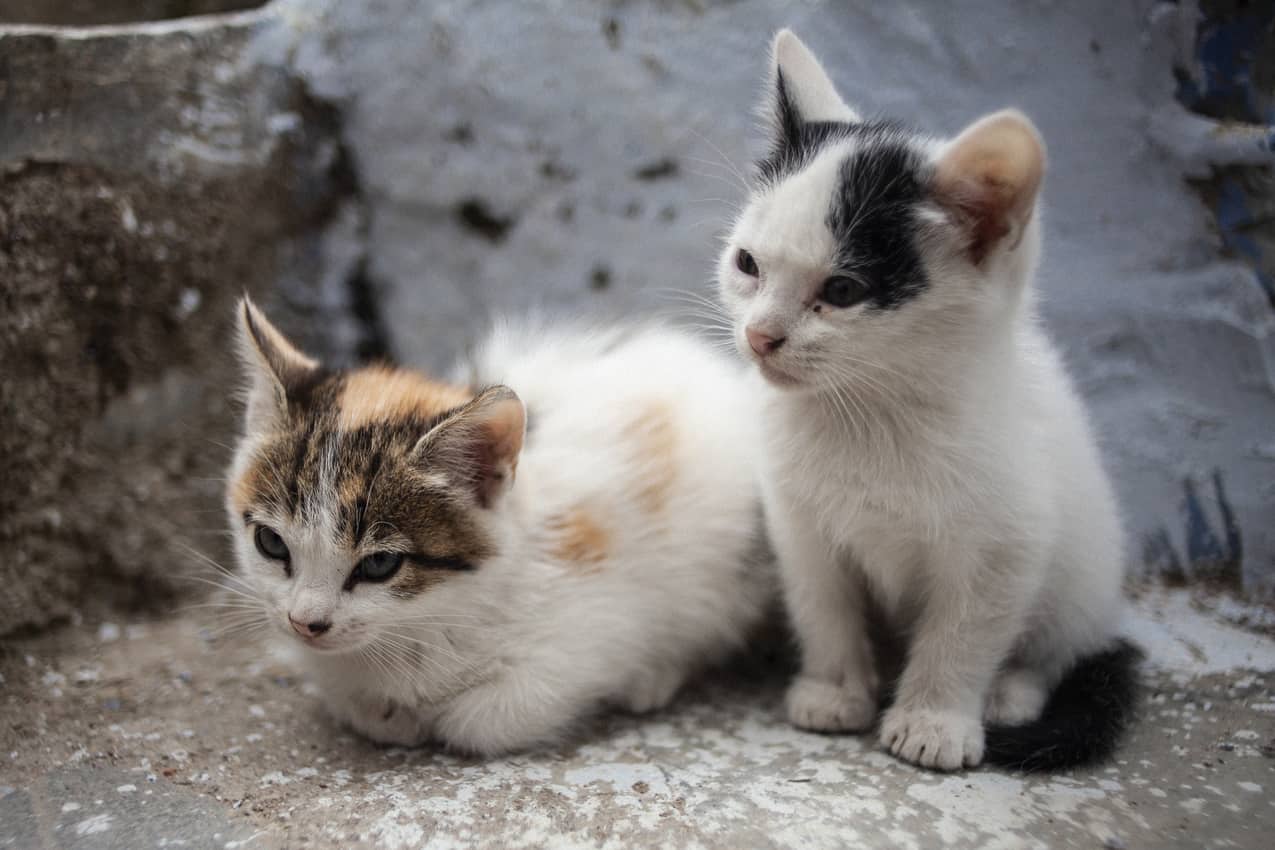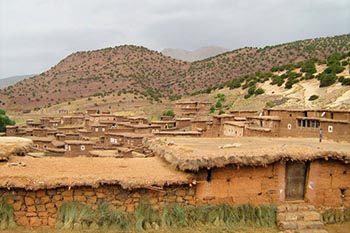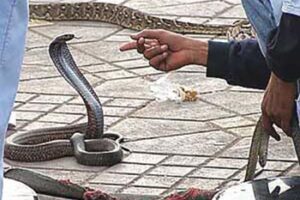
Exploring Morocco’s Blue City: Chefchaouen
By Andy Castillo

Note to self: If you are approached by a friendly farmer on the mountainside who wants to show you his crops, be advised that you may actually be buying hashish from him. After all, he did take the time to show you around and teach you about his pueblo, and he can’t part with the product without a profit — even if you don’t take any from him.
On a recent anniversary trip to Morocco, my wife, Bri and I encountered an unexpected adventure. After staying the night in Tangier, we took the CTM Bus about 2 1/2 hours to Chefchaouen, which is iconic for its many blue buildings. On our third day in the city, we mapped a hike outside the city limits to a white chapel on a nearby hilltop. About halfway up, we stopped at an overlook and surveyed the scene, awestruck by the view. Chefchaouen lay before us, awash in sunbeams that shimmered through a distant storm.
A stiff wind picked up just then and black clouds tumbled and rolled across the horizon, shrouding a distant mountainscape with a translucent haze. Behind us, Chefchaouen’s old city, the blue section, stretched up into the Rif Mountains.
“Are you lost?” came a voice in broken English through the wind from somewhere behind us. I turned. An aging man wearing a djellaba, or a traditional Moroccan dress with a pointed hood, trudged uphill a dozen paces back.
“We’re climbing up to that church,” Bri said, gesturing toward the chapel’s steeple, which was visible over the rise.
“Pequeña iglesia,” he said, noting the Spanish term’s meaning in English — “small chapel.” Then he grinned a broken-toothed smile.
Chefchaouen hospitality

By all accounts, the man, who introduced himself as Yassin, was friendly, warm, and seemingly excited to have the undivided audience of foreign travelers. For our part, Yassin was an intriguing character with a deep knowledge of the region.
He’d grown up in Chefchaouen, he explained and learned English at the local mosque, which he pointed out amidst the distant buildings. The city had about 20,000 residents, including a large number of immigrants enticed by the old city’s charm and a burgeoning tourism economy, he explained.
More than knowledge, Yassin represented to us Morocco’s hospitality, which we’d first experienced the day before while traveling through Tangier. At one traditional eatery, Restaurant Kasbah, the owner himself had served each decadent dish — tajine, couscous, harira, and pastilla, washed down by mentha tea — and sent us on our way with full bellies and warm hearts. Yassin, it seemed, shared the same mindset.
Thus, when he asked if we’d like to stop to meet his family and have a glass of tea at his modest home, which was a short walk into the valley, we weren’t surprised. The rain seemed like it would hold off for a little while longer, so we agreed.
At a divergence in the path, Yassin led the way down a slight depression into a thicket of dense bushes and cacti. While we walked, he related his story in Spanish, which he knew better than English. He had relatives in Spain with which he’d lived for a few years but moved back to Morocco a decade ago seeking the peace of nature. Outside the city, the air was clean and crisp. A graveyard stepped down the mountainside nearby and tiny streams wound around tilled farmland.
These days, he worked as a gardener, Yassin said.
“Of what?” I asked.
“Vegetables,” he said, “and marijuana.”
The hashish farmer

The latter divulgence was to be expected. Chefchaouen, I had read, was renowned for its hashish, an extract of the cannabis plant that contains concentrations of psychoactive resins.
“Do you smoke?” Yassin asked, removing a joint from his pocket and flicking a lighter to life.
“No,” I said, “never have and probably never will,” but assured him we held no objection to his own taking. Technically, marijuana was illegal in Morocco. In practice, however, it was as common as the generic magnets sold by the innumerable streetside vendors hawking their wares throughout the old city.
Walking through Chefchaouen’s narrow blue cat-infested streets was like walking through a surround-sound fun-house — whispers came from the shadows — “Want some hashish?” — smiling men lurked around corners, lounging against walls holding out joints.
Ignore them and they followed along for a few paces, lauding my beard as masculine — “Ali Baba,” a character of lore — and exclaiming “Fatima,” or shining one, in reference to Bri’s golden locks. It was the same tactic an amusement park ride operator might implement at Six Flags New England — grab the attention of passersby with brash compliments, then convince them to spend money on something they don’t want.

The endeavor toward Yassin’s house took on a deeper implication: This was a chance to see how a hashish farmer lived, to meet his family, and to experience how he harvested his product. At the same time, it was, obviously, a ploy to make money. That, in itself, held an allure.
At the entrance to his yard, a small brown and white dog raced to meet us, jumping at my leg and yapping bloody murder. A massive tree stretched its branches over a muddy yard where goats chewed their cud. Yassin led the way through a narrow gate to the house, which was built from faded blue cinderblocks.
A man with a large red nose greeted Yassin at the front door and the pair began conversing in Arabic.
After a minute, Yassin turned toward us. “This is my brother and my business partner,” he said. “Come in. Let me show you my home.”
Money for nothing
Inside, there was no family to greet us, nor was there any tea.
Instead, a box television blared into a dim-lit interior. The floor was unswept and dirty. The laundry was piled onto a washing machine. In front of the television, a young boy of about 8 years old stared unblinking at the flickering screen, which displayed a retro-American cartoon dubbed over.
Three ratty beds were positioned beside the largest bag of marijuana I’d ever seen.
“Sit, sit. Welcome,” Yassin said, gesturing to one of the beds.
I took account of the exits and, with apprehension, sat down beside Bri.
“Would you like a smoke?” he asked, ignoring our previous statements to the contrary and picking up a dried marijuana plant.
“No. But we’re interested in seeing how you process it,” I said.

He sat back and rolled a bit of the dried leaf between two fingers.
“You’ll have to pay,” he said, his demeanor suddenly business-like and cold.
“How much?” Bri asked.
“30 Euro.”
I didn’t have that much in cash — only about 10 Euros, which was enough for dinner that night. We regretfully declined his offer and stood to leave.
“You have to pay me for my time — it’s valuable — and for the product that I’ve already used,” Yassin said. He and the other man, who was also in the room, began loudly arguing in Arabic.
Of course, we hadn’t taken any hashish. Nor had he gone out of his way. Regardless, I thrust all the money I had into his outstretched hand and we tripped outside, past the boy and the still-yapping dog, retreating toward the chapel with echoes of their argument ringing in our ears.





- Chefchaouen, Morocco: The Hashish Farmer’s Home - January 13, 2020
- Moscow: Colorful Architecture Steeped in Military Tradition - December 23, 2019
- Moscow City Day Means Happy Revelers in Russia - September 16, 2019





